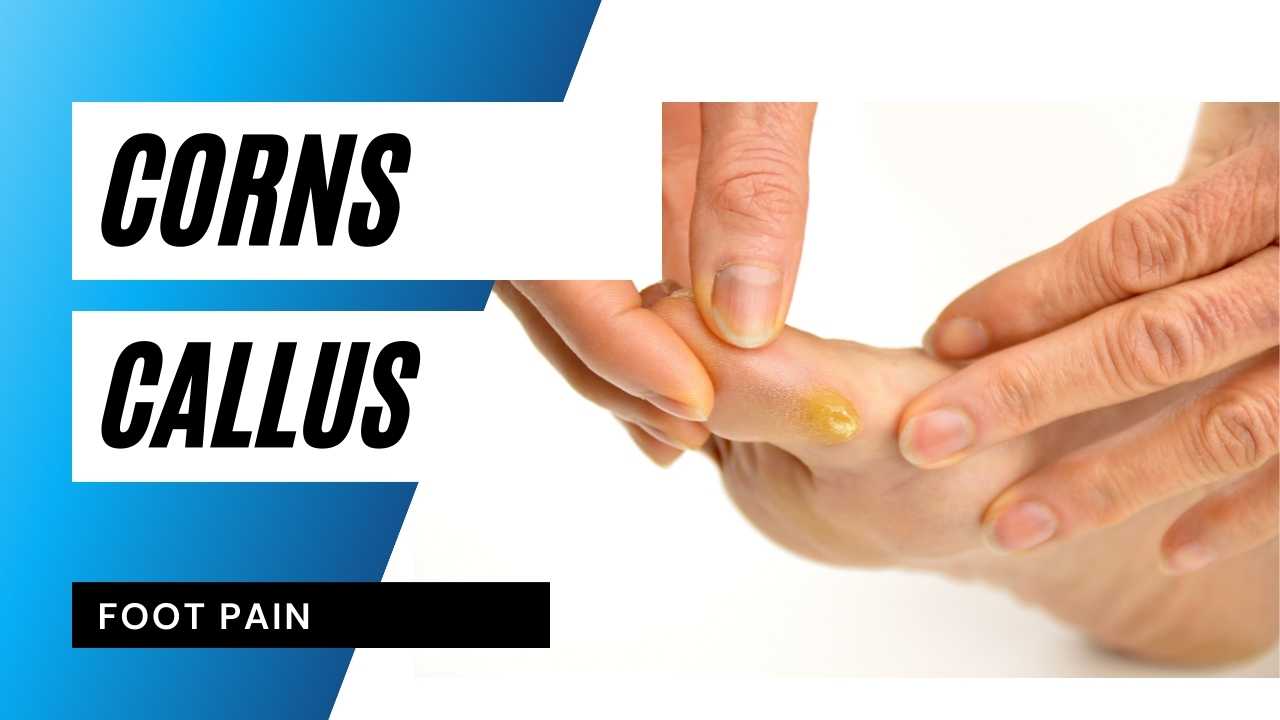To protect itself, your body employs a number of defensive mechanisms. Blood clots to prevent cuts from being lethal. Broken bones heal and re-establish the structural support they give. Corns and calluses form on your skin to protect it from friction that would otherwise cause it to wear away. However, these growths can sometimes cause difficulties that necessitate treatment.
Calluses are basically compacted layers of dead skin that were developed by your body to protect itself from repetitive pressure or friction. A guitarist will likely have them on his fingertips from hours spent playing the guitar or a runner may have calluses on her heels from running long distances. These are rarely painful and can vary in shape and size.
Corns and calluses differ in that a corn will appear as a raised bump rather than the flat surface of a callus. Another difference is that corns are usually smaller and have hard centers surrounding by irritated skin. They also tend to form on your feet’s non-weight-bearing areas.
While these illnesses do not produce pain on their own, they might lead to uncomfortable circumstances when they are put under stress. If either has formed on the bottom of your foot, and you’re laying on the couch with your foot propped up on a pillow, the dry spots on your sole are likely to go unnoticed. However, you may endure pain or discomfort after you get off the sofa and begin walking.
Repetitive movements that impart pressure or friction to your skin cause these growths. Wearing ill-fitting shoes or socks, or even not wearing socks at all, are common reasons. Tight, ill-fitting shoes, particularly high heels, can crush your foot against the inside, causing calluses or corns. Shoes that are excessively loose, on the other hand, allow your feet to slip around inside the shoe and scrape against the inner. If you don’t wear socks, the friction from your shoes will rub against your skin.
Bunions, hammertoes, and other foot abnormalities, among other things, can raise your chances of developing a corn or callus. Bunions are identified by a bony protrusion on the inside margin of the foot. If your shoes are too narrow, the protrusion will scrape against the inside of your foot, causing calluses.

Corns and calluses are usually easy to identify. The sole reason you might need an inspection is to rule out other possible problems, such as a cyst or a wart. An X-ray may be helpful in establishing whether the ailment is caused by a physical issue that requires therapy.
Corns and calluses can be treated at home by just avoiding the actions that caused them to form in the first place. Other ways to start treating the issue include changing worn-out shoes with new ones, utilizing protective padding for padding, and wearing comfortable, cushioned socks.
There are various effective strategies that we can utilize when home treatment fails and you require expert care. Do not attempt this at home; however, in our clinic, we can use a scalpel to remove thicker skin. A pumice stone or callus-removal medication can often help with these issues, and our clinic can offer you with instructions on how to use any of these items. Corns and calluses can be prevented with customized shoe inserts (orthotics). In rare cases, doctors may propose surgery to correct an existing bone alignment that is causing the friction that leads to a callus.
Need a Same Day Appointment? Call 1-804-273-1717
If your at-home treatment isn’t working, come to Achilles Foot and Ankle Specialists for the professional help you need. Our Richmond, VA clinic is dedicated to redefining your expectations for podiatric care, so give us a call at (804) 273-1717 or fill out our online form to schedule an appointment and learn more about how we can help you now.
+1-804-273-1717

